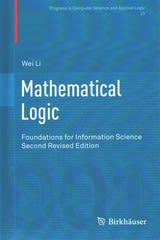Question
One of the authors used to have an electronic Yahtzee game that he played frequently. The game would roll five virtual six-sided dice. But were
One of the authors used to have an electronic Yahtzee game that he played frequently. The game would "roll" five virtual six-sided dice. But were the dice fair? It seemed to the author that sixes showed up more than what they should if the dice were fair and he wanted to test this. He had the machine roll 103 dice and obtained 19 sixes.
(a) Which of the following describes what the parameter is in the context of this problem?
The long-run number of times a one is rolled.
The short-run proportion of times a six is rolled.
The long-run number of times a six is not rolled.
The long-run proportion of times a six is rolled.
(b) Which of the following states the appropriate null and alternative hypotheses in the context of this study?
Null: The long-run proportion of times a six is rolled is 16.7%. Alt: The long-run proportion of times a six is rolled is less than 16.7%.
Null: The long-run proportion of times a six is rolled is 16.7%. Alt: The long-run proportion of times a six is rolled is more than 16.7%.
Null: The long-run proportion of times a six is rolled is 50%. Alt: The long-run proportion of times a six is rolled is less than 50%.
Null: The long-run proportion of times a six is rolled is 50%. Alt: The long-run proportion of times a six is rolled is more than 50%.
(c) Using an appropriate applet, find the p-value using a theory-based test (one-proportion z-test; normal approximation). (Round your answer to 4 decimal places; e.g. 0.2751.)
Type your answer here
(d) Summarize the conclusion from the p-value.
We have moderate evidence that the long-run proportion of times a six is rolled is more than 16.7%.
We have strong evidence that the long-run proportion of times a six is rolled is more than 16.7%.
We have very strong evidence that the long-run proportion of times a six is rolled is more than 16.7%.
We have little-to-no evidence that the long-run proportion of times a six is rolled is more than 16.7%.
Step by Step Solution
There are 3 Steps involved in it
Step: 1

Get Instant Access to Expert-Tailored Solutions
See step-by-step solutions with expert insights and AI powered tools for academic success
Step: 2

Step: 3

Ace Your Homework with AI
Get the answers you need in no time with our AI-driven, step-by-step assistance
Get Started


